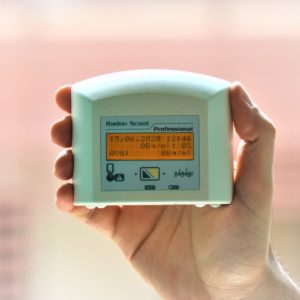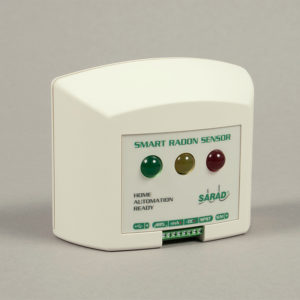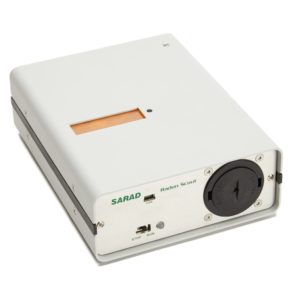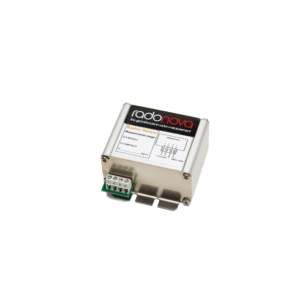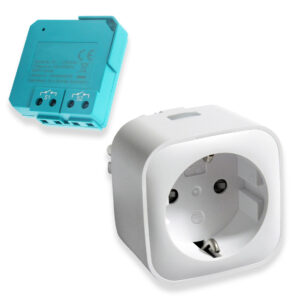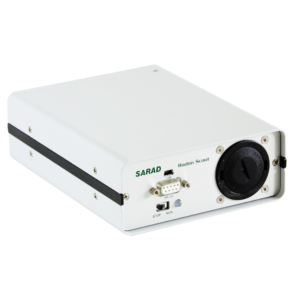-

Radon Scout Professional – SARAD Radon Detector
1.949,00€ – 2.149,00€ Sold By : Niton Srl
View products -

Smart Radon Sensor – The Smart Solution for Building Automatisation Systems
1.549,00€ – 1.749,00€ Sold By : Niton Srl
View products -

Radon Scout PLUS – Radon Monitor for Indoor Measurements
2.749,00€ Inc. VAT: 3.353,78€ Sold By : Niton Srl
Add to cart -

ROBIN2-Radon Sensor-Radon Ventilation Controller
572,00€ – 672,00€ Sold By : Niton Srl
View products -

Radio Transmitter and Socket bundle – Wireless On/Off Control for Radon Fans & Ventilators
65,00€ Inc. VAT: 79,30€ Sold By : Niton Srl
Add to cart -

Radon Scout – Radon Monitor for Indoor Measurements
2.549,00€ Inc. VAT: 3.109,78€ Sold By : Niton Srl
Add to cart
REDUCE RADON CONCENTRATION LEVEL THROUGH HEAT RECOVERY VENTILATORS (HRV)
Reza Hosseini, PhD - Managing Director at RadonMarket, R&D Manager & NRPP MFM Certified Radon Professional at Niton srl
The interest in indoor air quality has been increased in recent years. In many cases, the indoor air quality could be improved by improving the current air exchange rate. Mechanical ventilation systems such as Heat Recovery Ventilators (HRV) can increase the house's current natural ventilation rate besides saving energy. HRV is a system that uses the heat in the stale exhaust air to preheat incoming fresh air. This technique reduces the energy required to bring outside air up to ambient room temperature; therefore, it saves money on heating bills. Typical efficiencies range of HRVs are from 55% to 75%, but some highly efficient models are rated as high as 93% efficiency.
In this number of RadonMarket Mag we will examine the effect of HRVs on the indoor Radon concentration. In specific, we will see how to calculate the volume of air needed from an HRV system to reduce Radon concentration to a certain level and eventually choose a correct HRV size.

Before start, we need to know what the Air Changes per Hour or ACH is. The ACH is a dimensionless term used to quantify the amount of air exchanged naturally or with the help of a mechanical ventilator. To calculate the ACH, the volume of air exchanged per hour is divided by the volume of the house:

For example, if 75 cubic meters of air enters and leaves a building every hour (75 m3/h) and the building has an interior volume of 250 cubic meters (80 square meter building with 3-meter ceilings), the Air Exchange rate is:
Apart from northern Europe, the dominating European ventilation system is natural ventilation. Therefore in our calculations, we will use the natural ACH or ACHn. Every home has a certain amount of ACHn, e.i. a certain amount of outdoor air is exchanged naturally with indoor air. This means that "Every home leaks."
The ACHn of homes is usually less than 1 (typically between 0.1 to 0.3). As with the recent energy codes, newer homes are so much tighter, so it is fair to consider a greater ACHn for older homes than newer ones. However, "Energy-efficient homes do not cause the Radon problem!" In fact, new homes might be equipped with more efficient HRV systems, or even in some new constructions, a passive Radon mitigation system is already installed.
Knowing the HRV and ACHn, we are ready to talk about reducing the Radon level using Heat Recovery Ventilators. The first step is to measure the current Radon concentration of the house. We assume that the Radon level is consistent throughout the entire house, even if the measurement was performed at the lowest level. This is a conservative assumption that also simplifies our calculations.
Next, we need to know the ACHn. Rather than measuring the volume of air changed under normal conditions, it is possible to use the results of a standard blower door test in which 50 pascals of pressure are applied (ACH50). Another way is making an assumption. This assumption could be based on the house's tightness, age, and actual conditions or in a more conservative manner based on the minimum standards values. Table below summarises the standards/regulations related to the whole building ventilation rates in some European countries.
| Country | Whole building ventilation rates | Standard/Regulation Ref. |
| Czech Rep. | 0.5 /h | CSN 73 4301 Residential Buildings, CSN 73 0540 Thermal protection of Buildings |
| Denmark | 0.5 /h | DS 418:2002 |
| Finland | > 0.4 /h General rule: Outdoor air flow should be at least 0.35 l/s.m2 (1.26 m3/h.m2). | NBC e D2 |
| France | Min airflow for dwellings, according to the number of habitable rooms (R). 1 R: 105 m3/h 2 R: 120 m3/h 3 R: 150 m3/h 4 R: 165 m3/h 5 R: 210 m3/h 6 R: 210 m3/h 7 R: 210 m3/h | Arreté du 24.3.82 |
| Germany | <50 m2 up to 2 occupants: Nat. vent: 60 m3/h Mech. vent: 60 m3/h 50-80 m2 up to 4 occupants: Nat. vent: 90 m3/h Mech. vent: 120 m3/h >80 m2 up to 6 occupants: Nat. vent: 120 m3/h Mech. vent: 180 m3/h | DIN 1946 Part 6, DIN 18017, VDI 2088 |
| Greece | Detached houses, Estimated 5 persons/100 m2 of floor area. Block of Flats, Estimated 7 persons/100 m2 of floor area. | Greek Legislative Framework Document |
| Italy | per gli edifici residenziali si assume un tasso di ricambio d'aria pari a 0,3 vol/h | UNI/TS 11300-1 |
| Netherlands | 300 m3/h | Building Decree |
| Norway | Not less than 0.5 /h | Norwegian Building Code |
| Sweden | Requirements: Rooms shall have continuous 0.35 l/s/m2 floor area (1.26 m3/h/m2) when in use; This corresponds to 0.5 /h in a room with height 2.5 m. | Swedish Building RegulationsBBR94 |
| Switzerland | 12-15 m3/h/person (non-smoking, max CO2 1500 ppm). 30-70 m3/h/person (smoking). 25-30 m3/h/person (non-smoking, max CO2 1000 ppm). Air change rate in unoccupied rooms more than 0.3 /h | SIA 180, 1988, SIA 382, 1992 |
Sources: 1-UNI/TS 11300-1 | 2-International Energy Agency, Annitated Bibliography 13, review of Literature Related to Residential Ventilation Requirements, 2007 | 3-Ventilation in European dwellings: A review, 2011, doi: 10.1016/j.buildenv.2011.07.016
The last step is to use the following equation to determine the air volume needed from an HRV.

Where, is the current Radon concentration, is the radon concentration target to reduce, is the natural ACH, and is the entire volume of the house.
Let's make an example: Consider a building in Italy with an ACHn of 0.3 (a conservative assumption from Table 1) and the current Radon concentration of 300 Bq/m3 (from a long-term measurement with a Passive detector). If the volume of the house is 750 m3, determine the volume of air needed from an HRV to reduce Radon concentration to 100 Bq/m3.
 It means that the HRV should provide at least 450 m3 of fresh air per hour to reduce the radon level from 300 to 100 Bq/m3. In other words, an HRV should have an airflow capacity equal to or greater than 450 m3/h.
It means that the HRV should provide at least 450 m3 of fresh air per hour to reduce the radon level from 300 to 100 Bq/m3. In other words, an HRV should have an airflow capacity equal to or greater than 450 m3/h.
If you do not like doing the math, do not worry! We have prepared a simple calculator for you inside our app (AppoRad). You can find more information on this tool at the end of this number of RadonMarket Mag. The AppoRad is freely available on iOS, Android devices, or from the web using this link.
In the end some extra tips on Using HRVs in order to reduce the Radon level.
- HRVs are appropriate when levels are relatively low, like 150-300 Bq/m3, or as a supplemental technique to Active Soil depressurization (ASD).
- To ensure that the system does not create negative pressure within the building, "which brings more Radon," the incoming and outgoing airflow should be balanced!
- A periodic filter replacement and inlet cleaning are necessary to maintain a balanced airflow.
- Both internal and external intake and exhaust vents should be covered with screening to prevent the entry of animals or debris.

